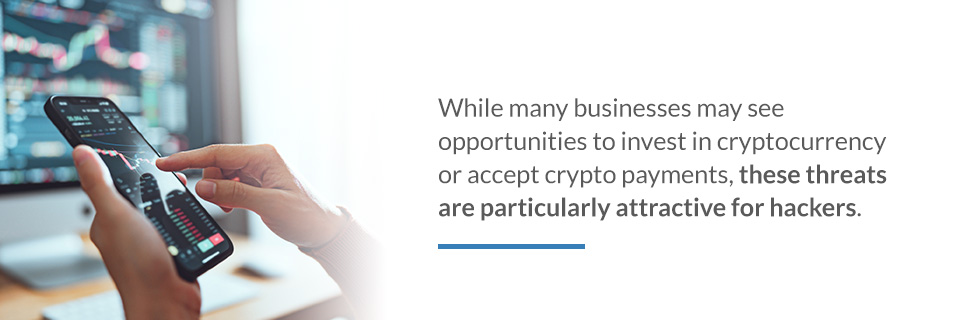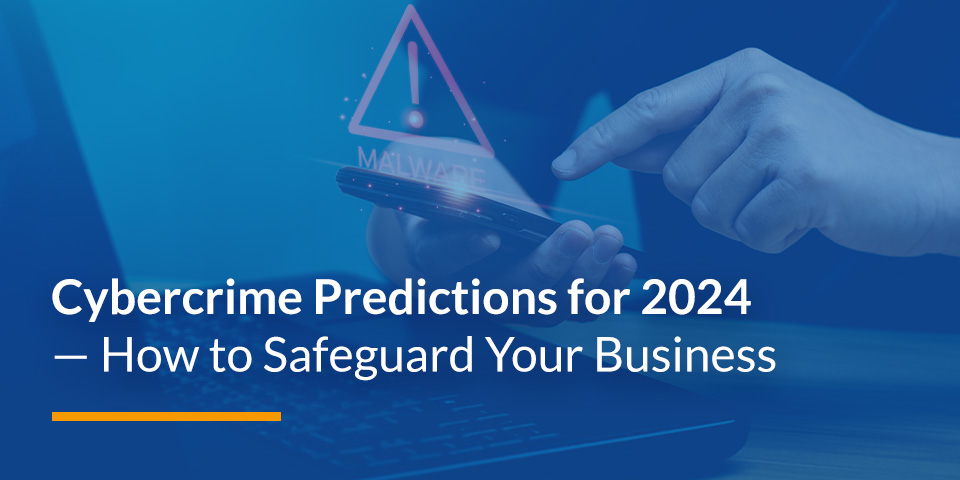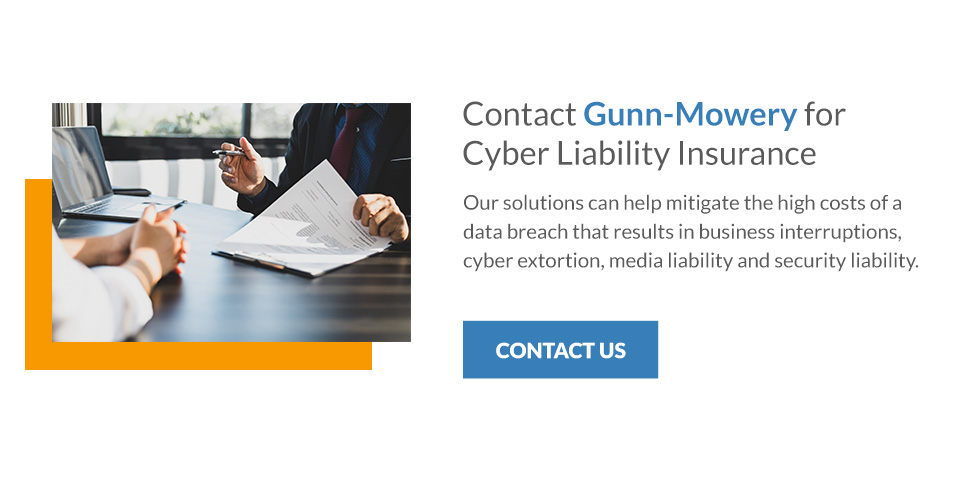During 2022, at least 83% of organizations experienced more than one data breach. 2022 also saw a 13% increase in ransomware attacks, exposing financial and other sensitive information. Cybercrimes can have long-lasting effects on a company, ranging from lost revenues to downtime to legal fees.
As technology continues to advance in its capabilities, so do cybercriminals. Today, businesses face new threats as cybercriminals evolve to bypass security measures. A cyberattack’s financial impact spreads to your investors and customers, hindering your ability to stay competitive. Protecting your business data is critical, so we’ve compiled everything you need to know about the latest trends in cybersecurity for businesses and solutions for safeguarding your operation.
The True Cost of Cybercrimes
Analysts project the estimated cost of worldwide cybercrime will reach $10.5 trillion by 2025 and nearly $14 trillion by 2028. According to a report by IBM, the average total cost of a data breach in the U.S. during 2022 was $4.35 million, reaching an all-time high.
A single vulnerability in your technology or security processes can lead to millions in damages, destroyed data, customer information and lost productivity.
Besides cybercrime’s effect on your bottom line, it can also influence your business’ reputation and image. Customers often view a data breach as a failure on the company’s end, causing them to lose trust and spend their money elsewhere. About half of consumers reported they would switch to new companies due to poor data policies or data-sharing practices.
Cybercrimes can also leak strategic business initiatives to competitors, damaging your advantage in the market.
Cybercrime Predictions for 2024
Malicious attackers hold confidential or sensitive data from businesses in exchange for a steep price — known as ransomware. However, today’s technology has led to many new potential security vulnerabilities. Here are the top cybersecurity issues for businesses to be aware of in the upcoming year.
1. The Rise of AI
It’s no secret that artificial intelligence has dominated the technology and cybersecurity sectors. While good actors can use AI to create robust, innovative cybersecurity tools, bad actors can use it to cleverly evade detection. AI systems that process and analyze data, including sensitive information, may become targets for data breaches. AI’s generative and automated nature may also make cyberattacks easier and more efficient for cybercriminals to leverage.
Deepfake AI has also become a new weapon for cybercriminals, enabling them to create convincing fraudulent images, audio or content. Often, cybercriminals use deepfake AI to steal identities and target employees to hand over private information. Unfortunately, recipients are more likely to open AI-generated phishing emails than manually created ones.
2. Cryptojacking
Cryptojacking is the act of implanting malware to hack into someone’s computer to mine valuable cryptocurrency, such as Bitcoin. According to the Federal Trade Commission, over 46,000 people reported losing more than $1 billion from cryptocurrency scams from 2021 to 2022.

While many businesses may see opportunities to invest in cryptocurrency or accept crypto payments, these threats are particularly attractive for hackers. These criminals may target their victims through giveaways, impersonations, phishing, investments and business opportunity scams.
DDoS Attacks
A distributed denial-of-service attack can overwhelm an infrastructure or server and lead to a crash. This cybersecurity threat can substantially damage a business by disabling its website, online shop or application. Cybercriminals often use DDoS to distract IT departments while depositing malware and stealing sensitive data.
Hackers can also use DDoS attacks to blackmail companies into paying a ransom and block customers from purchasing their products. Researchers report that DDoS attacks are increasing and becoming nearly indistinguishable from legitimate user traffic.
4. Social Engineering
Computer-based social engineering can impact all aspects of online business communication, as it relies on the human instinct of trust. These cybersecurity threats use more personalized approaches to give attacks access to private systems.
As with AI-related cyberattacks, hackers can use social engineering to create carefully worded content to convince people to transfer money, provide confidential information or download a file that installs malware on the company network. Cybercriminals can use social engineering through malicious links, phishing campaigns and search engine optimization to manipulate users and make their attacks appear more legitimate.
How to Safeguard Your Business From Cybercrimes
Every business has different data security protocols and capabilities. The following tips can help protect your most sensitive information and prevent catastrophic damage.
- Update security measures: Review your current antivirus and security software to ensure it has modern capabilities, such as data encryption and backups.
- Establish a secure configuration: If you don’t have one already, create a secure configuration process for your network infrastructure and company assets, including servers and portable, mobile and user devices.
- Monitor equipment and IT systems: Staying vigilant by continuously observing your network traffic and behavior can help you identify an attempted data breach immediately.
- Reduce remote work risks: Remote workers may be more vulnerable to cyberattacks when using unsecured home network connections with minimal protection. Reduce these weaknesses by training employees to be aware of scams, verifying devices and implementing behavior analytics to flag any suspicious activity.
- Diminish the use of removable data: USBs and other portable devices are easy to misplace or steal, resulting in a data breach. Establish a removable data use policy to minimize the spread of malware between devices and protect confidential data.
- Build a well-defined policy: Establishing cybersecurity objectives and procedures for your organization can enhance overall protection. A well-defined cybersecurity policy might outline expectations for encryption of email attachments, installing unapproved software, restrictions for social media usage and using company devices for personal use.
- Require strong passwords: Cybercriminals can quickly figure out easy-to-remember passwords. Multi-factor authentication and complexity requirements for passwords can strengthen your defense against hackers.
- Dispose of unsupported software and equipment: If your business holds onto obsolete software or hardware. Outdated or unsupported software cannot update and patch vulnerabilities, exposing your data to unauthorized access. CISA outlines several strategies for proper data disposal.
- Protect your business with insurance: You can reduce your business’ exposure to common cyberattacks with many tactics. However, if a cybersecurity attack occurs, the damage can be irreversible. Cyber insurance, also called cyber liability insurance and cybersecurity insurance, can protect you against financial losses in a data breach.
Contact Gunn-Mowery for Cyber Liability Insurance
As a busy professional, it’s not always possible to eliminate all potential cybersecurity risks to your business, especially as they evolve with new technology. However, cyberattacks can leave your operation vulnerable to liability claims. At Gunn-Mowery, we’re here to protect your assets and employees from malicious online attacks with cyber liability insurance.
Our solutions can help mitigate the high costs of a data breach that results in business interruptions, cyber extortion, media liability and security liability. We strive to take all our clients to the upside of insurance through transparent communication and a positive experience. Contact us today to learn more about our services or request a quote to get started.


